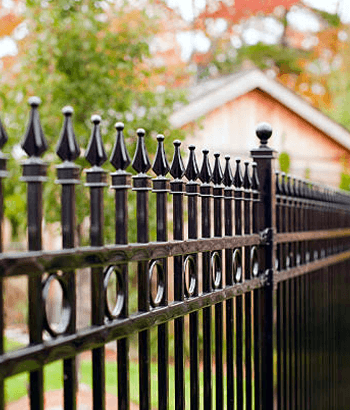What Makes A Dividing Fence?
In terms of legislation, a fence is defined as anything that encloses an area of land. This includes natural formations such as hedges, creeks and ditches. In terms of constructed fencing, a dividing fence also includes gates or any other attachments. Dividing fences should, if possible, be constructed directly along the boundary line that sits between properties. This can be an issue if the boundary line runs along terrain that makes it impossible to construct a fence.
Who Owns The Dividing Fence?
The ownership of the fence is dependent on whose property it sits on. If the fence is installed along the property line it is equally owned by both neighbours. This is the ideal situation but sometimes it cannot follow the exact property line and when this happens ownership will belong to the owner of the land, regardless of who paid for its construction. This also applies if only a part of the fence is not on the boundary line.


